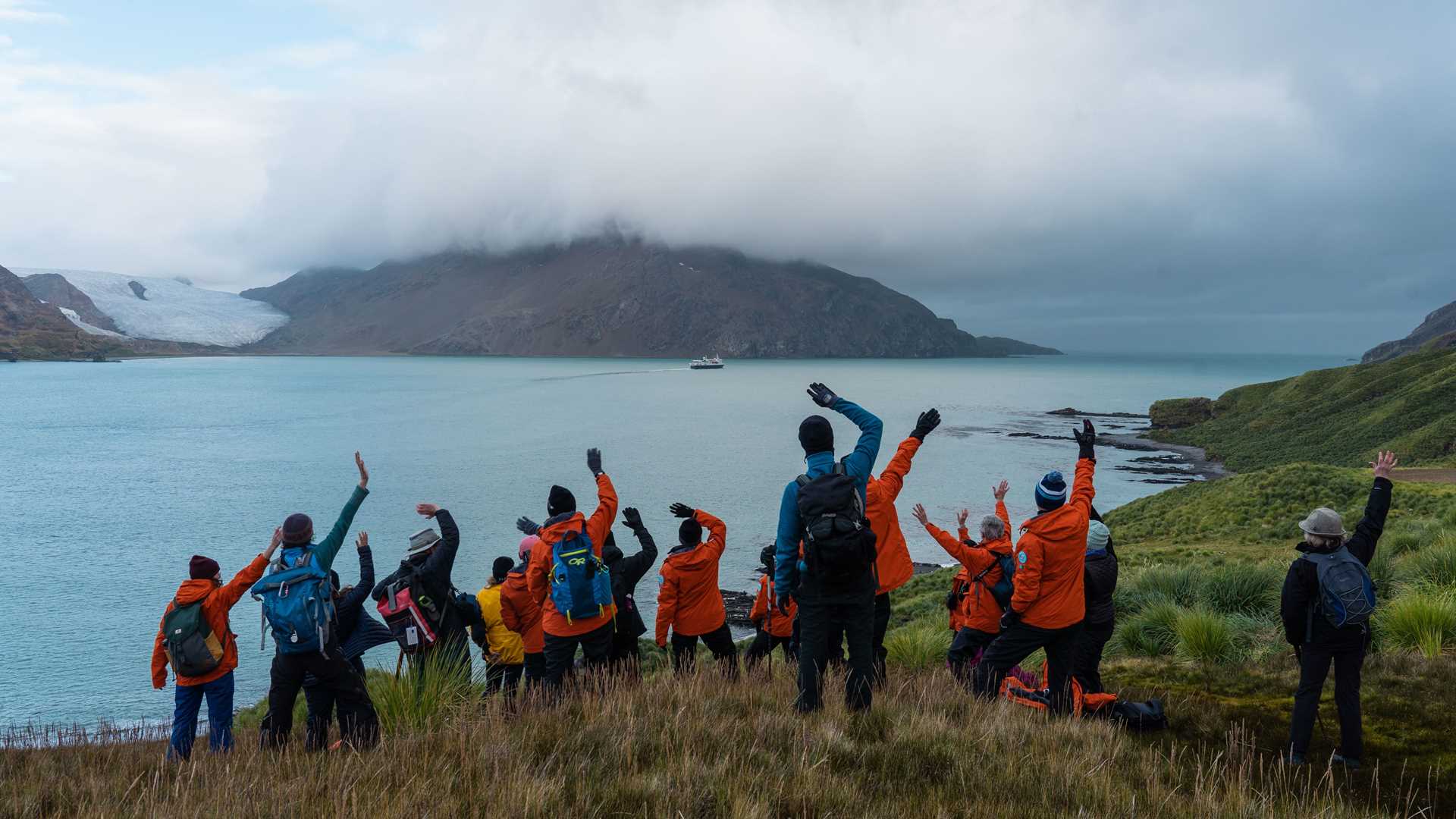After a very early breakfast, a group of us from National Geographic Explorer set off on what has become known as “The Shackleton Hike.” The hike covers the last few miles of Sir Ernest Shackleton’s epic journey towards Antarctica between 1914 and 1916. The events unfolded like a movie script, and indeed several movies have been made from this story. After the Endurance sank on November 21, 1915, Shackleton and his men spent months on the ice before a harrowing sail from the Weddell Sea to Elephant Island. From there, Shackleton and five others sailed for sixteen days in a lifeboat called the James Caird to reach South Georgia, 1200 kilometers away.
When Shackleton arrived to South Georgia, he—along with Tom Crean and Frank Worsley—crossed perilous ice fields to reach relative civilization at the whaling station of Stromness. We joined the story for the last five miles of that walk.
We hiked up from Fortuna Bay as National Geographic Explorer pulled away, and photographer Alex Krowiak took photos. Though we would only be away from our warm ship for a few hours, the history around us was palpable. Farther along the trail, we passed Crean Lake, where Tom Crean fell through the ice and nearly froze. Then we crested the ridge where the men finally heard the whaling station’s whistle and knew they were saved. When our ship’s horn sounded—an echo of history—we tried to imagine their relief.
We have paralleled Shackleton’s experience all week: hiking in his footsteps, searching for his campsites, and visiting his grave.
After lunch, we moved a short distance to Hercules Bay in search of calm water for kayaking and Zodiac cruising. The walls of this bay showed gorgeous layers and folds of sedimentary rock, some of which were occupied by macaroni penguins.
Photo caption and credit: Guests wave goodbye to National Geographic Explorer from the trail where we followed Shackleton’s footsteps. Photo by Alex Krowiak







